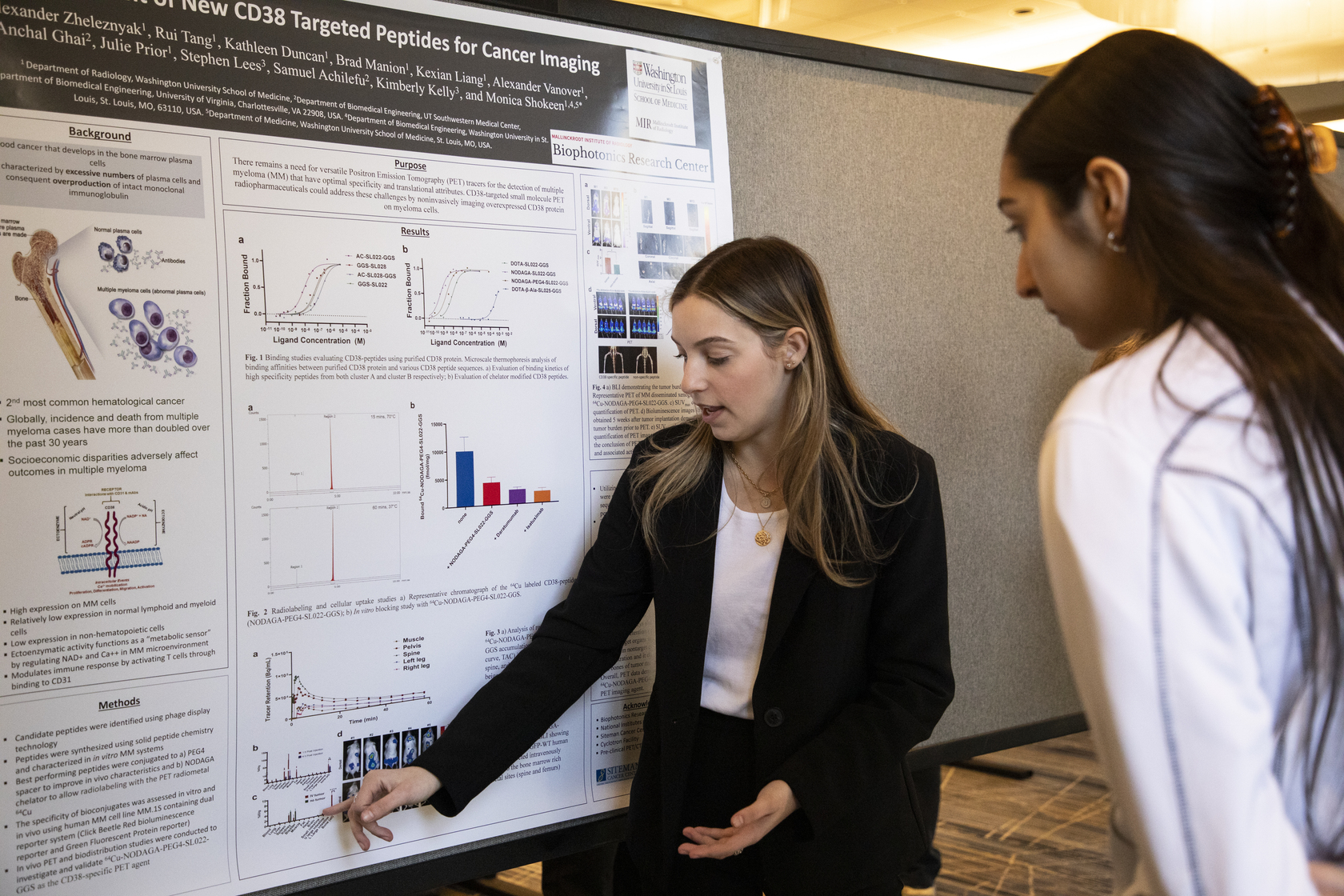Alumni Spotlight: Sean Pierce, MD

Sean D. Pierce, MD, (Class of ’99) is chair of the Department of Radiology at Hackensack University Medical Center in Hackensack, New Jersey, and a partner in the Hackensack Radiology Group. As he serves both the physicians and patients at New Jersey’s largest provider of inpatient and outpatient services, Pierce draws on lessons he learned during his residency at Mallinckrodt Institute of Radiology.
What attracted you to radiology?
I am a very visual person and I enjoy technology. For me, radiology was a wonderful way to integrate those interests. From a visual perspective, what we deal with in radiology are images, representations of things that are behind the veil. We are able to see things that other people can’t see without opening a patient up. That is a bit of magic. That was something that immediately attracted me — that sense of wonder.
Another thing was the technology. We have great toys in radiology. We’re right at the leading edge, and everything is on fast-forward. If there’s anything that’s true about radiology, it is that things will always change. We’re always re-inventing ourselves. Other specialties are beneficiaries of what originates in radiology. It is a great engine of innovation.
Why did you choose Mallinckrodt for your residency training?
When I came for my visit and saw Mallinckrodt, it was eye opening. Frankly, it was a little like Disneyland. Seeing a multistory building dedicated strictly to radiology was extraordinary. The amount of resources dedicated to this one specialty was incredibly impressive to someone entering the field.
Who were some of the instructors at Mallinckrodt who left the greatest impression upon you?
Stuart Sagel was head of chest (cardiothoracic imaging). He was brilliant and an incredibly inspirational person. He could have a strong personality. In days past, we dealt with physical film we’d look at on our view boxes. The instinct would be to reach for it and touch the film. He didn’t approve of that. He would ask, “So, what does that feel like?” You realized at that moment you’d made a mistake. Louis Gilula was the orthopedic imaging head. More than anything else, he taught me about the relationship between the radiologist and the referring clinician. In radiology in general, we operate behind closed doors. We tend to fall into our own world and own sphere. But truthfully, we are the doctors’ doctor. Lou taught me it is incumbent upon us to understand what kind of problem the referring clinician was facing and what we could do, what information we could add, to improve the life of the patient.
How else does your time at Mallinckrodt continue to play a role in your life today?
Several people I met during my time at Mallinckrodt are the people I count as my absolute closest friends. There’s Sanjeev Bhalla, who is now chief of chest at Mallinckrodt. Christine “Cooky” Menias is at the Mayo Clinic in Scottsdale, Arizona. Perry Pickhardt is now chief of gastrointestinal imaging at the University of Wisconsin School of Medicine and Public Health in Madison, Wisconsin. All three of these people really helped me so much in my personal growth and in making my time at Mallinckrodt an absolutely positive experience.
Tell us about your current dual positions as chair of the Department of Radiology for Hackensack University Medical Center and as a partner of Hackensack Radiology Group?
Our practice is in contract with the hospital. I’ve been in practice 14 years, and I have been chairman at Hackensack for two years. It’s a 900-bed hospital, New Jersey’s largest. Within the department we have 225 employees. I’m also chair of the Department of Radiology at a satellite location, Hackensack UMC at Pascack Valley, which is a 128-bed hospital. I split my time between administrative tasks at both institutions as well as clinical duties. Several years ago, our practice made the commitment of providing 24-hour, seven-days-a-week radiology internal coverage to the hospital. We have an active pool of around 25 radiologists, who are split between three shifts to provide that coverage. We’re a busy group.
What projects have you ushered in as chair?
We’ve undergone a bit of a technological revolution. We’ve been very proactive in instituting measures to achieve “meaningful use” compliance ahead of regulatory deadlines and have promoted methods to facilitate direct electronic exchange of images and information between clinicians and patients. We also have achieved some success in leveraging voice recognition technologies and, in the near future, plan to deploy clinical decision support technologies within the electronic health record.
How has your practice changed over time?
Previously, radiologists had seen ourselves primarily responsible for providing interpretative services for a large number of images. Now we find ourselves expanding our value-added qualitative practice; we’re morphing into a greater level of service within the context of integrated care. That means we’re also participating in the conversation about health care in conferences and in committees at the hospital and other health institutions. It is important for all of us to be aware and present.
What are your interests beyond radiology?
Photography has become a real passion. I know you could say that as a radiologist that I’m all about the image. However, life has taught me in the recent past that at the end of the day, all you have left after any given experience are the photographs and the memories.





